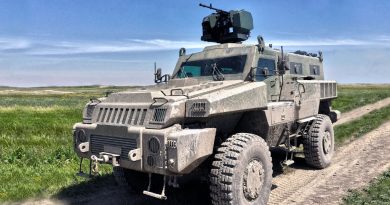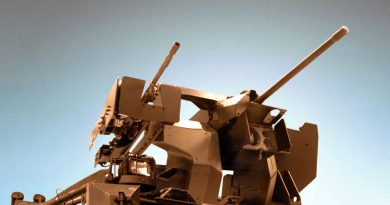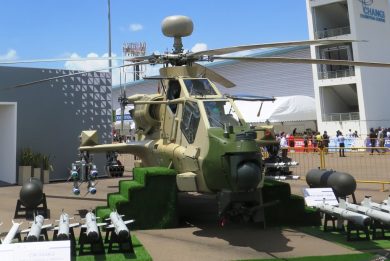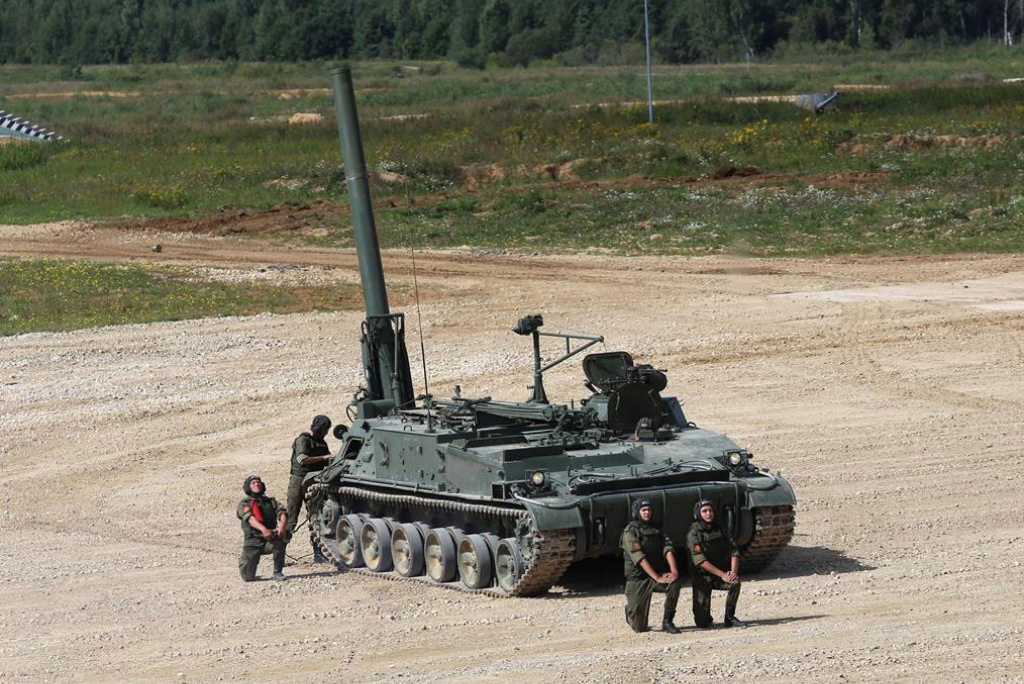
Russia’s defence industry gears up for a long war
Russia’s defence industry has shifted to a war footing, leading to greater government involvement and investment along with near continuous production of key military hardware. This shift is beginning to return results and the country is increasingly ready for a long war. This article will examine what has changed, and how Europe can help Ukraine to prevail by limiting Russia’s production potential.
It is apparent that the Russian government has responded decisively to the needs of the war. Many Russian factories now work triple shifts, six days a week. The success of these measures is reflected in the sustained output that Russia is now capable of; over 500 missiles and drones were launched at Ukraine in five days at the end of 2023, according to President Zelensky. At the frontline, Russia has increased its expenditure of artillery ammunition to around 10,000 rounds per day, and over 3,700 armoured vehicles were delivered in 2023. Alongside conventional arms, the Russian defence industry has delivered 22,000 drones, hundreds of Lancet loitering munitions and initiated production of the Geran-2, an improved version of the Iranian Shahed attack drone.
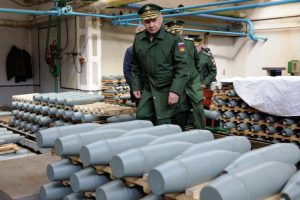
The Russian defence industry is responding in force to the demands of the war in Ukraine, whereas Europe’s industry only now appears to be realising the extent of support required to ensure Ukraine prevails. This means there will be a time lag before Ukraine begins to receive the vital weapons and ammunition needed to defend itself. There are actions that can be taken to disrupt Russia’s defence industry, such as restricting the export of refined raw materials, that will be covered later in this article. First, it is necessary to understand the changes that have occurred within Russia’s industry, and how they contribute to the country’s war effort.
Defence industry priorities for a long war
There are two clear priorities driving Russia’s defence industry: The first is the need to equip and supply the Russian forces fighting in Ukraine. The second is to equip and arm new units as they are formed. To achieve this, “Russia’s defence industry has increased production of artillery ammunition, armoured vehicles, UAVs, and missiles,” Dr Jack Watling, the senior land warfare fellow at the Royal United Services Institute told EDR On-Line. This has been accompanied by significant structural reforms within the defence industry. UralVagonZavod (UVZ) has divested Plant No. 9, the Burevestnik Central Research Institute and Uraltransmash to another company called Tekhmash, which manufactures artillery ammunition. This means that all of the factories and companies relating to artillery are managed by a single concern with expertise in that area, leaving UVZ free to focus on the production of tanks.
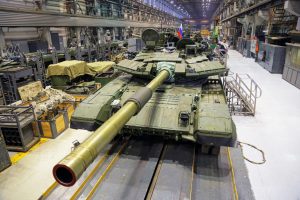
The available information indicates that this has been successful. The Russian MoD received 1,500 tanks in 2023, whereas annual production in 2021 is not thought to have exceeded 400. While it is likely that many of those tanks represent refurbished vehicles as opposed to new-build hulls and turrets, this is reasonably sufficient for the Russian armed forces. “Russian industry quadrupled 152 mm artillery rounds in 2022, producing one million rounds, but this was achieved by reallocating production capacity from other calibres,” Dr Watling explained. “Over the course of 2023, we have seen the absolute quantity of ammunition production increase, across all natures,” he added. Rostec, the company with overall authority for much of Russia’s defence industry, was transferred 15 ‘gunpowder factories’ at the start of 2023 to modernise them and improve ammunition production. This reflects further structural changes that have been taken to revitalise Russia’s defence industry.
In other areas, Russian production is improving the quality of weapons employed. This is apparent in the modernised tanks – new variants of the T-80BVM and T-72B3M that have appeared in service – as well as the Geran-2. The Geran-2 is the domestically manufactured version of the Iranian Shahed, “the Russians are employing their technical understanding and technological capabilities to improve the Geran-2. They are using new navigation systems, materials and more stealthy designs for the propeller to improve its survivability,” Dr Watling said. Production is currently at 300 drones per month, it is expected to reach 500 Geran-2s per month in the near future.
Not all is as it seems with Russia’s figures, “the drive to meet production targets has resulted in things like under-filled shells,” Dr Watling said. Furthermore, there is the delivery of one million artillery shells from North Korea, which has most likely enabled the RuAF to increase its activity whilst its own industry has begun to realise increased production figures. However, it is apparent in the regular UVZ and Tekhmash announcements, that non-trivial quantities of modernised armoured vehicles and artillery systems are reaching the RuAF. They are sufficiently equipped to mount offensive operations along the front and increase ammunition expenditure in the process.
Finding the materials needed for a long war
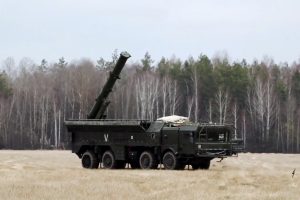
In preparing for a long war, the Russian defence industry has faced challenges in sourcing the necessary raw materials. At one end, it has required government-supported efforts to acquire advanced microprocessors like the U-Blox GNSS navigation modules used in many Russian drones and missiles. In May 2023 it emerged that Kazakhstan was a vital link in the sanctions evasion chain, by importing dual-use products such as chips from Europe and then re-exporting them to Russia. This is achieved through Russian front companies established in Kazakhstan, and in some instances the products are shipped straight to Russia, according to a Radio Free Europe, Radio Liberty report from June 2023.
Chinese firms are increasingly involved supporting Russia’s defence industry through various means, “they provide machine tooling, optics, raw materials, and in some cases finances,” Dr Watling said. “In others, they appear to be backfilling the materials used by Iran in producing drones and munitions for Russia, or selling military equipment to Russia under the guise of police equipment,” he added. There have also been reports of Chinese companies providing propellant for small arms, body armour, and uniforms. And, of course, many of the thousands of drones used by Russian forces in Ukraine are either manufactured in China, or use parts that were made in China.
With particular reference to machine tooling, China is now a leading supplier of computer numerical control (CNC) machines to Russia. CNC machines are automated manufacturing systems such as laser cutters and mills. Chinese-origin CNC machines now make up 57% of Russia’s CNC imports, compared with just 12% before the war. This is a significant shift, Russia imported 57% of its CNC machines from Europe in 2017. The Russian industry would presumably prefer the precision and quality of European machines, but are able to employ Chinese equipment for certain processes to maintain the war effort.
Making the long war short
How can the EU and its partners work to help prevent Russia succeeding in a long war? “Raw materials are key, Russia can access a lot of the raw materials it needs to sustain the war effort domestically. But it is often reliant upon the global market for some critical minerals and many subcomponents,” Dr Watling said. Additionally, Europe’s defence industry is beginning to accelerate and increase its own production of critical defence materials. Until full-scale production is realised, it may be possible to further support Ukraine through the innovative use of technology and expertise, or the identification of likely bottlenecks within the EU’s supply chain so that they can be eliminated ahead of a surge in production. Neither effort would be wasted, it is clear that Russia’s defence industry is not just preparing for a long war with Ukraine, but a potentially protracted confrontation with NATO. Deterring any further conflict will require many things, but an outright political commitment to producing the materials necessary to fight and win a major war, as well as to finding and removing barriers to surging production, will be one element that cannot be ignored.
Photos courtesy Russian MoD, ROSTEC and P. Valpolini

